BFI Anime Season
March 26, 2022 · 0 comments
By Andrew Osmond.
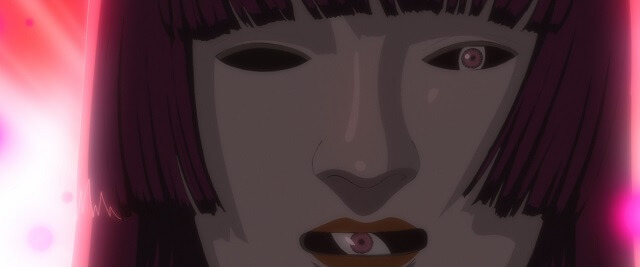
Next week, a huge two-month season of anime screenings rumbles into life at London’s BFI Southbank. Starting this coming Monday, it’ll run all the way through April and May; the screenings and booking links to the end of April are available at this page, and the May screenings go on general sale from Thursday 7th April. You can see a full list of all the screenings here.
Many of the films will be familiar to readers of this blog, and many have been covered on this blog. But here’s a friendly guide to some highlights.
Firstly, a heads-up to all fans of Masaaki Yuasa, and we know that’s a lot of you. His latest movie opus, Inu-Oh, is being previewed next Wednesday, and tickets are still available as of writing. I’ve not seen it yet, but Jonathan Clements’ article on the film will have you covered. It’s a story of medieval music stars, and the word is it’s Yuasa at his all-out craziest – reviewer David Ehlrich called Inu-Oh “a head-scratching, jaw-dropping, head-banging freak-out.”
If you want to brush up on some of the historical context before seeing the film, you might watch the 11-part anime series The Heike Story, available on Funimation. It’s made by Inu-Oh’s studio Science Saru, though in less mad mode, and it fills in events two centuries before Inu-Oh that impinge on its story.

Another new film will be previewed on Wednesday 20th April – Bubble, in advance of its release on Netflix, which promises to fill up the big screen. It’s set in a ruined Tokyo that’s become an assault course for daring youngsters, bringing together a starry cast of industry legends. Director Tetsuro Araki (Death Note, much of Attack on Titan) joins writer Gen Urobuchi (Psycho-Pass, Puella Magi Madoka Magica), with music by Hiroyuki Sawano (Attack on Titan, Gundam Unicorn) and character designs by Takeshi Obata, who drew the Death Note manga. That’s a hell of a band.
There’s a further film that’s “new” for most British viewers, and I’ve been waiting to see it for a long time. Liz and the Blue Bird is animated by Kyoto Animation and directed by A Silent Voice’s Naoko Yamada. It’s an intimate story of two schoolgirls’ friendship in a music band, and the reviews have been rapturous. The IGN site deemed it “one of the most structurally complex films about the necessity of communication for healthy relationships… It displays human insecurity and vulnerability in beautifully honest ways.” Liz is linked to Kyoto Animation’s wonderful Sound! Euphonium series, but the consensus is the film stands alone perfectly.
A Silent Voice, by Yamada and Kyoto Animation, will have screenings in April too; the one on 18th April will be introduced by Rayna Denison. But there are also other April screenings in the same vein as Liz, stories of friendship, often female. They include Shunji Iwai’s utterly delightful The Case of Hana and Alice, about kooky girls doing kooky things. This blog offers perspectives on it from Jonathan Clements and Jasper Sharp, plus a director interview.
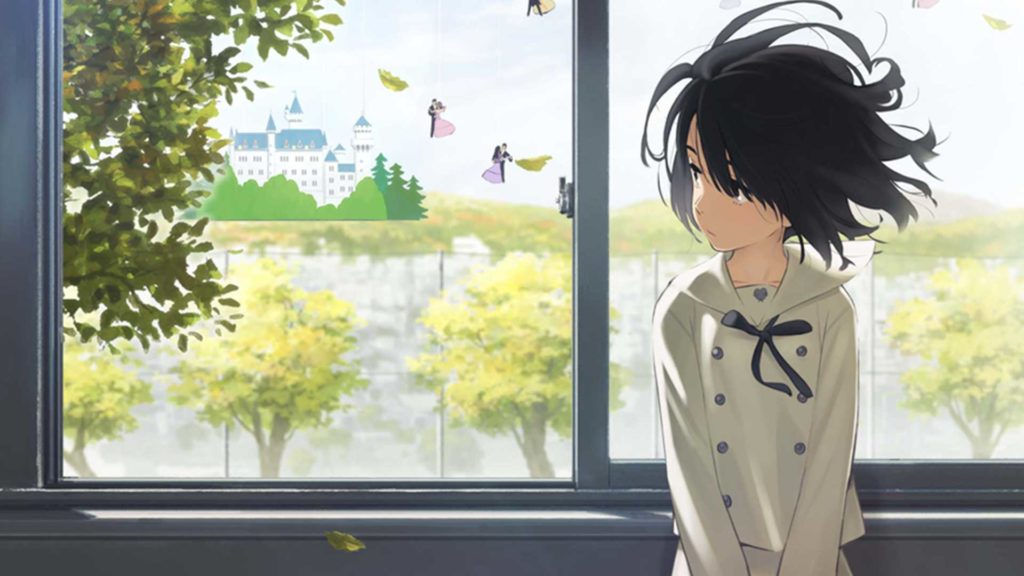
Another April gem that you may have missed is Anthem of the Heart. It’s about students roped into a school music performance; one is a girl who was traumatised by a ghastly childhood incident, but she’s slowly tempted from her shell. The scenario is commonplace, but the film feeds in story and character touches that make things far more complex; it feels like melodrama, and yet it’s more real than melodrama. The story was written by the feted Mari Okada, who’s profiled here.
Okada’s own director debut Maquia is also screening. It’s set in a fantasy world, but it’s still massively intimate, about the relationship between an elf-like girl and the human child she saves and raises as a mother. But there’s a terrible twist; the girl is far longer-lived than humans, and will long outlast the son she loves. (For Tolkien fans, think Aragorn and Arwen meets Oedipus.) It’s one of the most emotional fantasy films ever.
If you’re in the mood for a sombre girls’ friendship, then I’d recommend Ghibli’s When Marnie was There. It’s about a girl who comes to a place of marshes and mist and encounters the angelic Marnie, who may be just a phantom of the mind. It’s often dismissed as a lesser Ghibli film, a shadow of past hits, but I think it’s far more distinctive than that, deeply sympathetic to its characters, and echoing vintage BBC dramas at their more atmospheric. Indeed, the film was based on a British book, though it transposes the setting from Norfolk to Hokkaido.
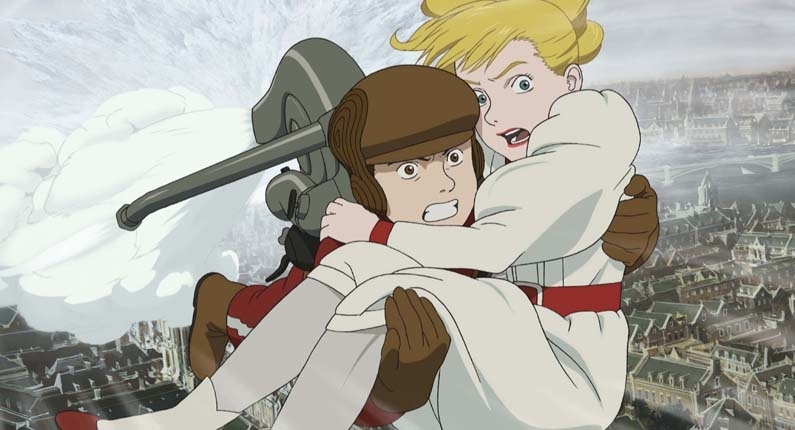
Across the scale, if you want slam-bang spectacle, then see Steamboy, in which Katsuhiro Otomo gleefully smashes up Victorian London. It’s absolutely made for the big screen; I have vivid memories of a cinema audience laughing and cheering at the action, especially the jokes. It’s way funnier than Akira and looks and sounds absolutely great. If you’ve suffered Hollywood flops like Mortal Engines and League of Extraordinary Gentlemen, and you want to see what a good steampunk film is like, then here you go.
But if you like the more meditative approach of Ghost in the Shell, there are two other films that you have to see. They’re the Patlabor films (Patlabor: The Movie and Patlabor 2: The Movie), both by Ghost’s director Mamoru Oshii. They’re direct precursors to Ghost, with the same themes and poetic conceits. Again they’re about an urban police team – not cyborgs this time, though they use big robots to fight crime.
The first film is a terrific procedural, as the characters uncover a fiendish apocalypse scheme. It’s especially memorable for the climax, a terrific one-on-one duel between a girl and a mecha which obviously anticipates the tank battle in Ghost, yet plays very differently.
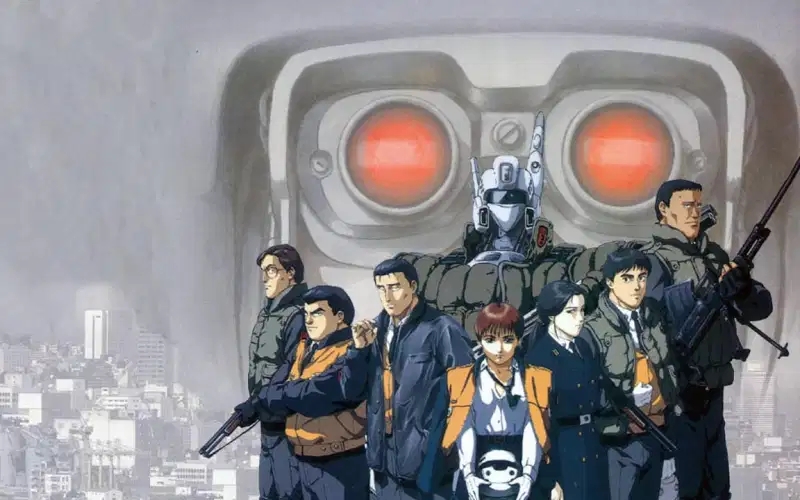
As for Patlabor 2… It’s an artwork in itself, an anime film that feels more live-action than Your Name, Perfect Blue or Ghost in the Shell. It’s a conspiracy film where Tokyo is occupied by the military, leading to a stunning vision of the defamiliarised city, daily life flowing around parked tanks, set to the ambient mediations of composer Kenji Kawai. It’s also overtly political, about modern Japan as a puppet of America, and a precursor to anime such as Eden of the East. It also gets massively homaged in the middle episode of Psycho-Pass: Sinners of the System.
The main drawback of both Patlabors is that they use characters previously established in earlier versions of the franchise, made for video and TV. But it’s easy to pick up the characters, especially the contrast between the young bright-eyed team members and their more serious seniors. Shinobu Nagumo is an outstanding adult woman character, of the kind you don’t often see in anime, barring Motoko in Ghost. In the first film, one American Patlabor officer called Clancy suddenly drops into the story midway through, so don’t be surprised when she appears.
There’s also a rare chance to see another serious SF drama, Wings of Honneaimse. In it, the space race is enacted on a world very like ours, but different in the smallest details. It’s a breakout title by the Gainax studio, and features stunning animation by future Evangelion creator Hideaki Anno, including a terrific rocket take-off. Honneamise will always be controversial for a shock scene of sexual violence; the festival listing indicates the uncut version will be shown. It’s a scene many viewers find offensive, though I think it’s not simply gratuitous, but integral to the film’s ethos, how even a sinner may rise to the sublimity of sky and stars.
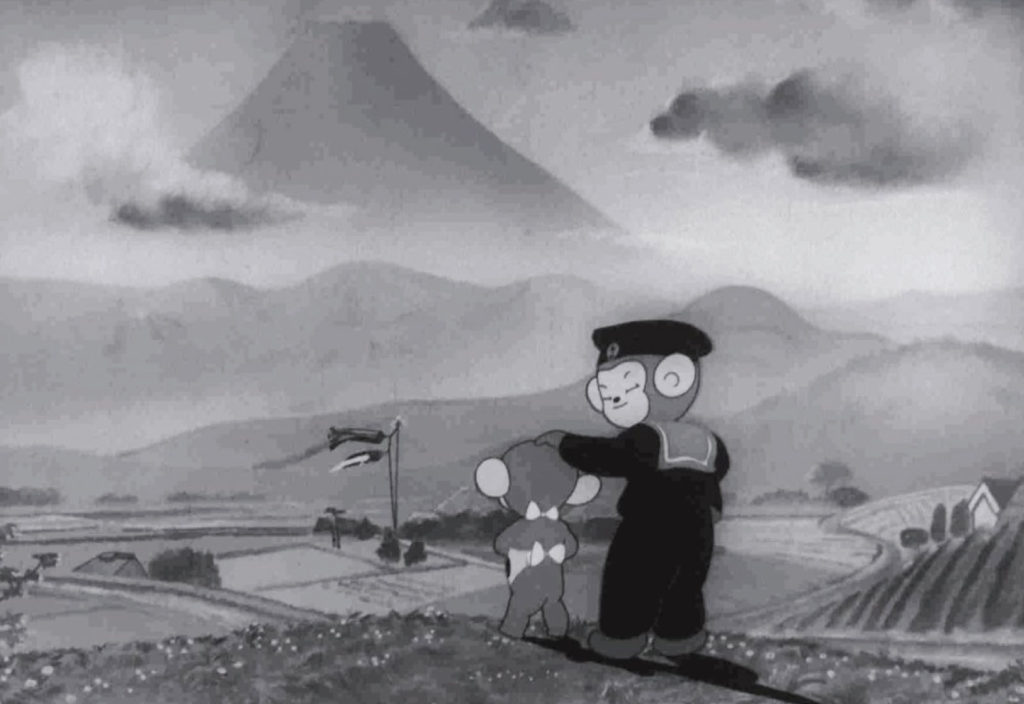
Then there are a host of retro screenings, led by the very first feature-length anime, the black and white war propaganda film Momotaro: Sacred Sailors, made in the dying days of World War II. It’s not conventional entertainment for today’s viewers, but it’s fascinating, as funny cartoon animals train to attack the west. There’s a sublime moment when the animals parachute into battle and the parachutes resemble billowing flower blossoms. There’s far more discussion on the blog here, here and here.
April also has screenings of the rape-revenge phantasmagoria Belladonna of Sadness; the screening on 4th April is presented by Helen McCarthy. There are showings of dubbed episodes from the 1960s version of Kimba The White Lion, the first TV anime in colour, and the 1980s TV Astro Boy. Additionally, there’s a programme of early black-and-white short anime films, made for cinemas between 1917 and 1946, including the extraordinary Disneyesque The Spider and the Tulip by Kenzo Masaoka. McCarthy presents the screening on 29th March.
The other April screenings include the overlong but enjoyable Cowboy Bebop: The Movie. Set before the series finale, the film takes place in a New York-style city on Mars; director Shinichiro Watanabe would use a similar setting in his later series Carole & Tuesday. There’s a superb set-piece homage to the train chase in The French Connection and a clever, poignant extension of the “dreaming” motif which underlies so much of the source series. Spike’s foe in the film, a mad bomber, sees the world very much as he does.
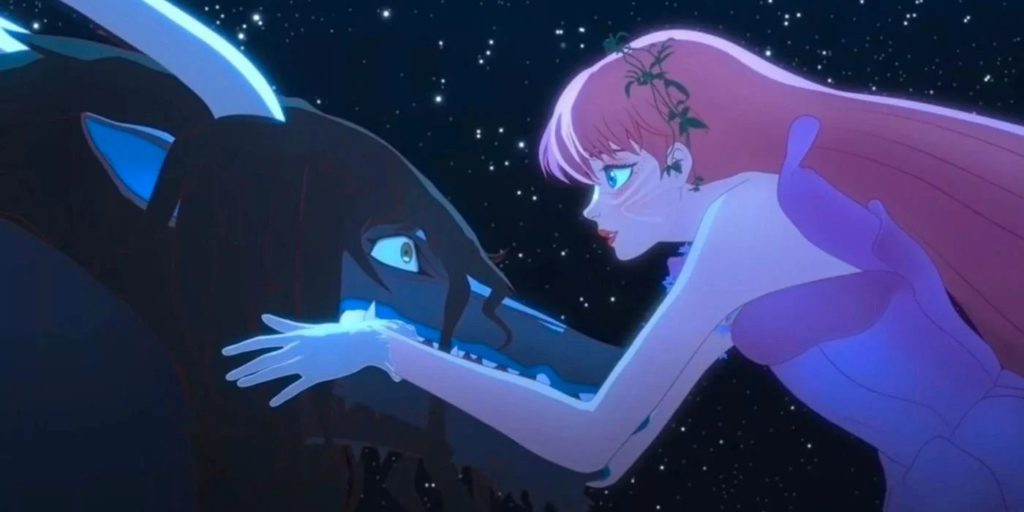
Mamoru Hosoda’s Belle gets an IMAX screening on 25th April, there are IMAX screenings of Ghost in the Shell on the same day. April’s screenings are topped off by showings of Spirited Away and Totoro, neither of which should need much introduction, and a live panel discussion of anime on 31st March.
The May screenings are largely dominated by screenings of films by Kon, Hosoda and Shinkai. Lovers of science-fiction spectaculars will be served by screenings of Tekkonkinkreet, an IMAX-sized Akira, and the anthology Memories. Co-directed by Katsuhiro Otomo (and it shows!), Memories is one of my favourite anime ever, swinging from a Shining-style ghost story on a space station, to a salaryman on a bike being chased by all the world’s armies. Memories also had some input from Satoshi Kon, whose ebullient Millennium Actress will have an IMAX screening on 23rd May.
May will also offer a rare chance to see Miyazaki’s pre-Ghibli comedy-adventure, Lupin III: Castle of Cagliostro, on the big screen. There’ll be showings of the Fullmetal Alchemist movie The Conqueror of Shamballa – that’s the big-screen final chapter of the first Alchemist TV anime series, which diverged into a very different timeline from the source manga. And to finish with something brand-new, on 13th May there’ll be a showing of the mid-length Summer Ghost, set at a summer festival, followed by an interview with the director.
Andrew Osmond is the author of 100 Animated Feature Films.
Leave a Reply